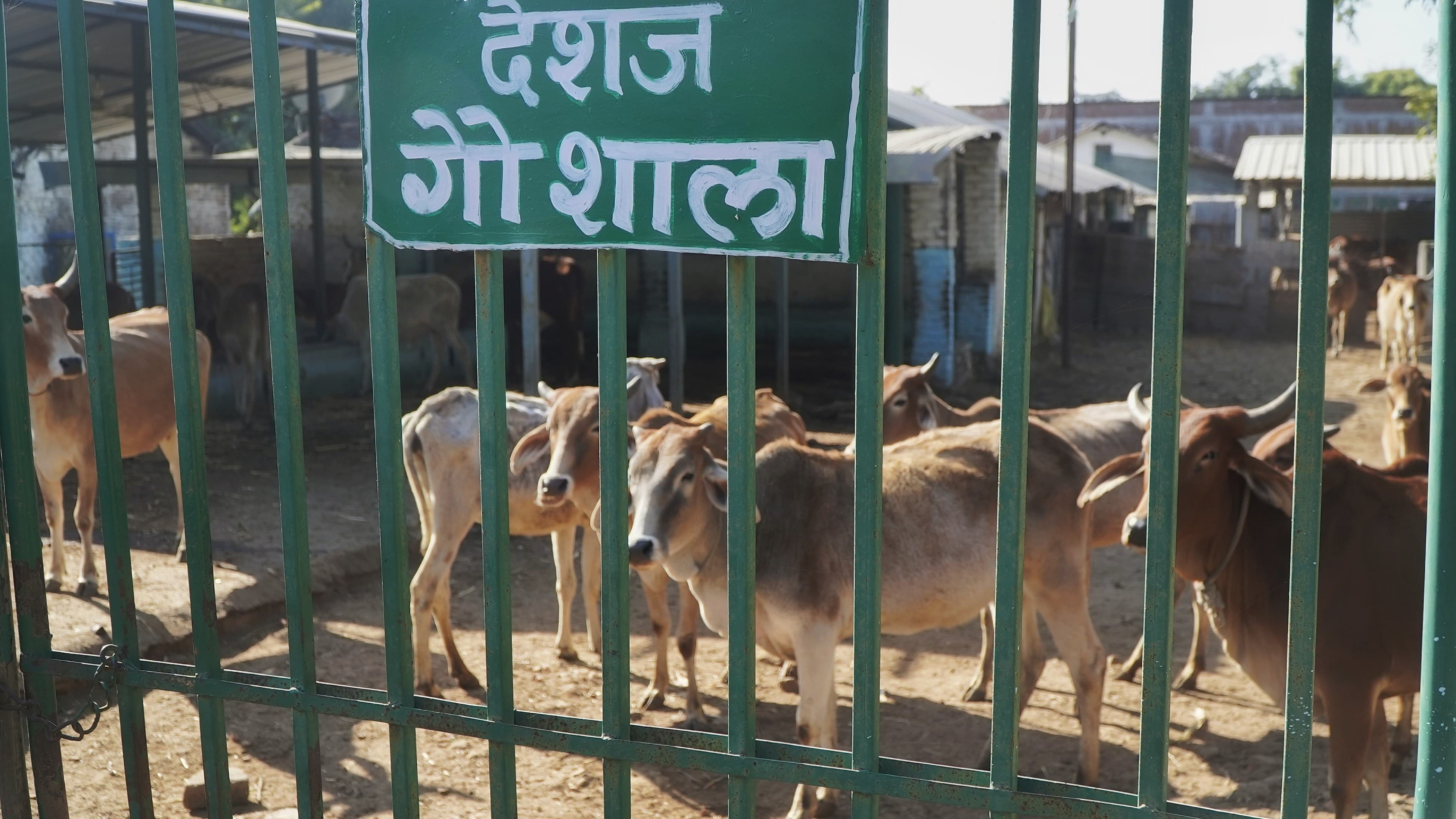 Loading...
Loading...
 Loading...
Loading...

The cow holds a revered place in Indian culture and plays a crucial role in the country's economy, aligning closely with Mahatma Gandhi's vision of self-reliance and sustainable agriculture. Gandhi was a staunch advocate for cow protection, viewing the cow and her calves as indispensable components of the economic order he envisioned for India.

The Economic Significance of the Cow
At Gandhi Nidhi Chhatarpur our philosophy dictates that the cow is not merely a sacred animal but a vital part of the agrarian economy. We believed that the cow symbolizes the essence of rural life and agricultural sustainability. The economic activities surrounding cows—such as dairy production, agriculture, and organic farming—are foundational to the livelihoods of countless families in India.
As Gandhi articulated, "the cow touches all our economic activities," highlighting its integral role in maintaining a thriving rural economy.
Key Aspects of Cow Protection
⦁ Sustainable Agriculture: The cow contributes to organic farming practices by providing natural fertilizers through manure, which enhances soil fertility without the need for chemical inputs. ⦁ Dairy Production: Cows are essential for milk production, which is a significant source of nutrition and income for many households. ⦁ Cultural Heritage: Protecting cows is intertwined with preserving traditional agricultural practices and cultural values that have sustained communities for generations.
Gandhi's Vision for Cow Preservation
Gandhi emphasized that protecting cows was not just a religious duty for Hindus but a broader responsibility that encompassed ethical treatment and welfare. He argued that cow protection should include ensuring their health and well-being, advocating for better living conditions in cow shelters (pinjrapoles), and improving cattle breeds 13. His approach called for a comprehensive strategy that integrated economic development with ethical considerations.
Community Engagement and Empowerment
The promotion of cow protection aligns with Gandhi's principles of swaraj (self-rule) and community empowerment. By fostering local economies through sustainable practices centred around cattle, communities can achieve greater self-sufficiency. This approach not only honours the legacy of Gandhi but also addresses contemporary challenges in agriculture and rural development.
In today's context, embracing Gandhi's vision for cow preservation is essential for promoting sustainable agricultural practices and enhancing rural livelihoods. By recognizing the economic significance of cows and integrating their welfare into our agricultural policies, we can create a more resilient and self-reliant society. This commitment to cow protection reflects not only respect for tradition but also a forward-thinking approach to sustainable development in India.